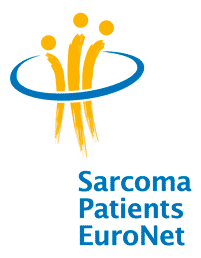European Commission Grants Lilly’s olaratumab (LARTRUVOTM), in Combination with Doxorubicin, Approval for the Treatment of Advanced Soft Tissue Sarcoma in Europe
- Olaratumab, in combination with doxorubicin, is the first front-line therapy approved in four decades for advanced soft tissue sarcoma in Europe
- JGDG study showed olaratumab, in combination with doxorubicin, offered a median 11.8-month increase in overall survival compared to doxorubicin alone
- Olaratumab, in combination with doxorubicin, is the first approved monoclonal antibody to treat advanced soft tissue sarcoma.
Eli Lilly and Company announced on November 11, 2016 that the European Commission granted conditional marketing authorisation for olaratumab (LARTRUVOTM, olaratumab injection, 10 mg/mL), in combination with doxorubicin, to treat adults with advanced soft tissue sarcoma not amenable to curative treatment with radiotherapy or surgery and who have not been previously treated with doxorubicin. The Committee for Medicinal Products for Human Use (CHMP) reviewed olaratumab under the European Medicines Agency’s accelerated assessment program.
Olaratumab, in combination with doxorubicin, is also the first approved monoclonal antibody to treat advanced soft tissue sarcoma. This approval is based on data from the Phase 2 portion of the pivotal JGDG trial and followed a positive recommendation from the CHMP announced on 16 September 2016.
“Olaratumab, in combination with doxorubicin, has demonstrated improved overall survival compared to doxorubicin alone in advanced soft tissue sarcomas, and is a promising new agent in these tumours,” said Robin L. Jones, BSc, MB, MRCP, M.D., consultant medical oncologist and head of the Sarcoma Unit at The Royal Marsden and team leader at The Institute of Cancer Research, London, and an investigator of the JGDG registration trial.
The primary study endpoint was progression-free survival (PFS) and key secondary endpoints included overall survival (OS) and objective response rate (ORR). The EMA previously granted olaratumab with Orphan Drug Designation for the treatment of advanced soft tissue sarcoma in the EU.
“Soft tissue sarcoma is a very complex disease that is very difficult to treat, and there is a significant need for new treatment options,” said Markus Wartenberg, president of Sarcoma Patients EuroNet Association. “This advancement in treatment is encouraging and we hope to see more innovations for our patients in the future.”
As part of a conditional marketing authorisation, Lilly will need to provide results from an ongoing Phase 3 study. This study, ANNOUNCE, is fully enrolled. Until availability of the full data, the CHMP will review the benefits and risks of olaratumab annually to determine whether the conditional marketing authorisation can be maintained.
This is the first marketing authorisation for olaratumab in Europe and follows U.S. Food and Drug Administration (FDA) approval in October 2016.
About olaratumab (LARTRUVO)
Olaratumab is a PDGFRα blocking antibody that specifically binds PDGFRα and prevents receptor activation. LARTRUVO exhibits in vitro and in vivo anti-tumour activity against selected sarcoma cell lines and disrupted the PDGFRα signaling pathway in in vivo tumour implant models.
The Phase 3 trial of olaratumab and doxorubicin in advanced STS, ANNOUNCE, is fully enrolled (ClinicalTrials.gov Identifier: NCT02451943).
About the JGDG Trial
The open-label, randomised Phase 1b/2 study, JGDG, compared olaratumab in combination with doxorubicin chemotherapy to the control arm of doxorubicin alone in patients with unresectable, advanced STS not amenable to curative treatment with surgery or radiotherapy. After confirmation of safety in the Phase 1b portion of the study, 133 doxorubicin-naïve patients were randomised 1:1 in the Phase 2 portion of the study. A total of 66 patients were treated on the olaratumab-doxorubicin arm, and 67 on the control doxorubicin arm. The primary endpoint of the study was PFS. Key secondary endpoints included OS and ORR.
Randomisation was balanced by ECOG performance status, histological tumour type, PDGFR expression and previous lines of treatment.
Patients treated on the olaratumab and doxorubicin arm achieved 6.6 months of median PFS compared to 4.1 months on the control doxorubicin arm (stratified hazard ratio [HR], 95 percent confidence interval [CI]: 0.672 [0.442 1.021]; p=0.0615). The investigator-assessed PFS was confirmed by independent review (HR=0.670; 95 percent CI: [0.04-1.12]; p=0.1208) with a median PFS of 8.2 months vs. 4.4 months. OS was statistically significant, with patients treated on the olaratumab and doxorubicin arm having achieved a median OS of 26.5 months (95 percent CI, 20.9 31.7) compared to 14.7 months (95 percent CI, 9.2 17.1) with doxorubicin (stratified HR, 0.463; 95 percent CI, 0.301 0.710; p=0.0003). The ORR was 18.2 percent (95 percent CI; [9.8-29.6]) with olaratumab plus doxorubicin and 11.9 percent (95 percent CI: [5.3-22.2]) with doxorubicin (p=0.3421).
The most common (greater than 5 percent incidence) grade 3 or higher adverse events identified in the study were neutropenia (53.2 percent on the olaratumab combination arm vs. 32.3 percent on the control doxorubicin arm), anemia (12.5 percent vs. 9.2 percent), fatigue (9.4 percent vs. 3.1 percent) and musculoskeletal pain (8 percent vs. 2 percent). There were no increases in febrile neutropenia (12.5 percent on the olaratumab-doxorubicin arm vs. 13.8 percent on the control doxorubicin arm), infections (7.8 percent vs. 10.8 percent) and patient discontinuations (13 percent vs. 19 percent). Grade 3 or higher infusion-related reactions occurred in 3 percent of patients on the olaratumab-doxorubicin arm vs. 0 percent on the control doxorubicin arm.
Source: Eli Lilly and Company

